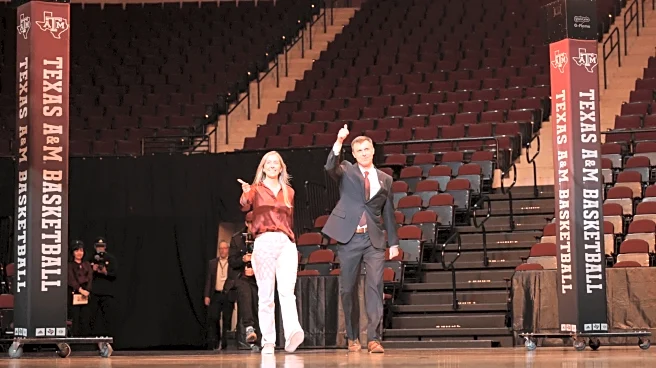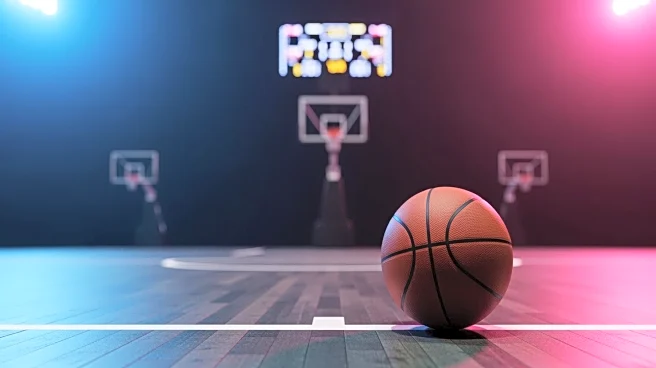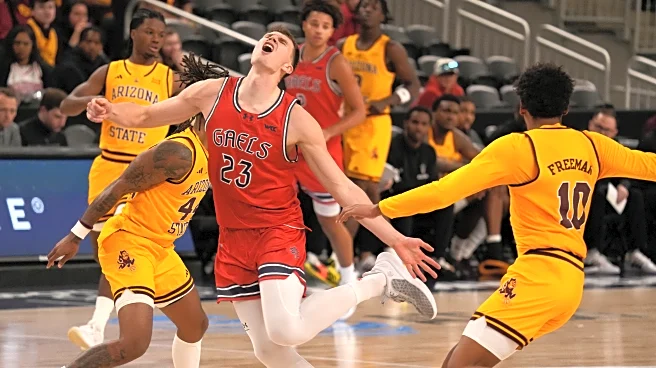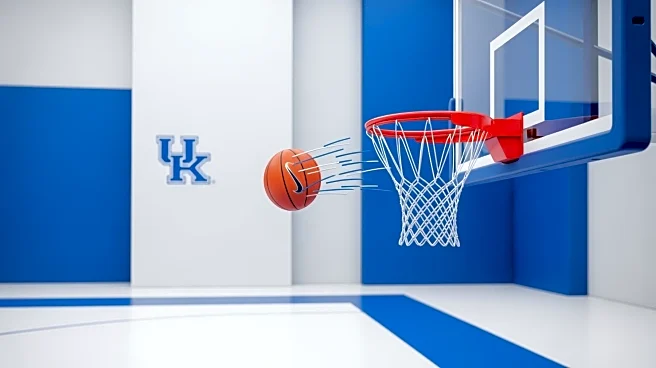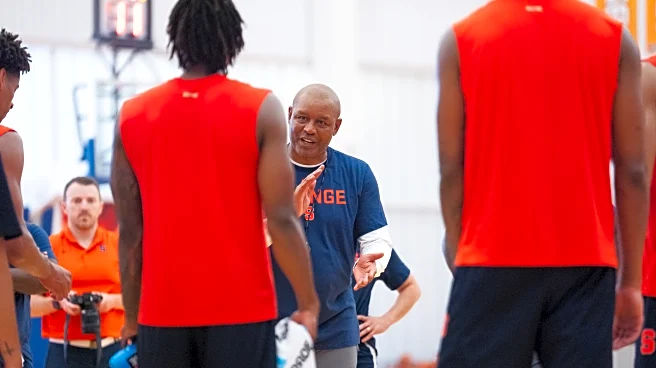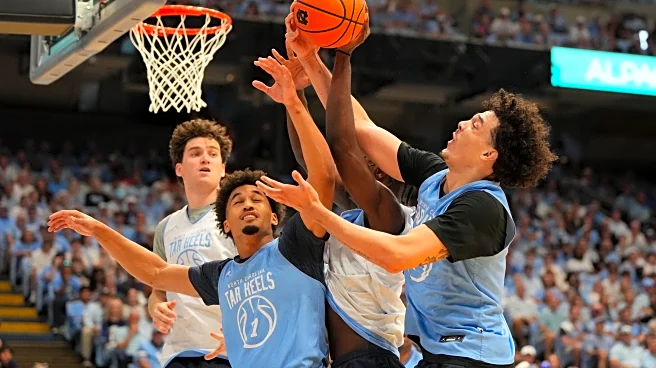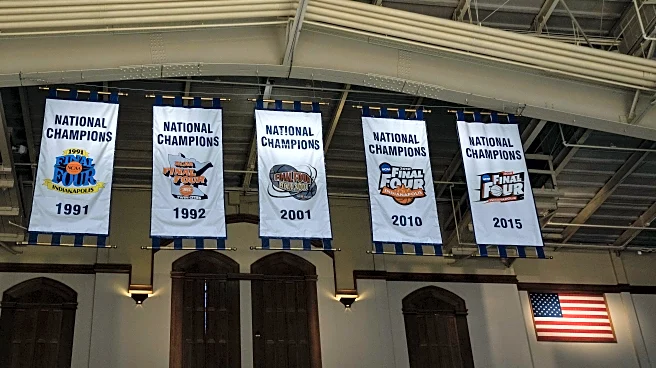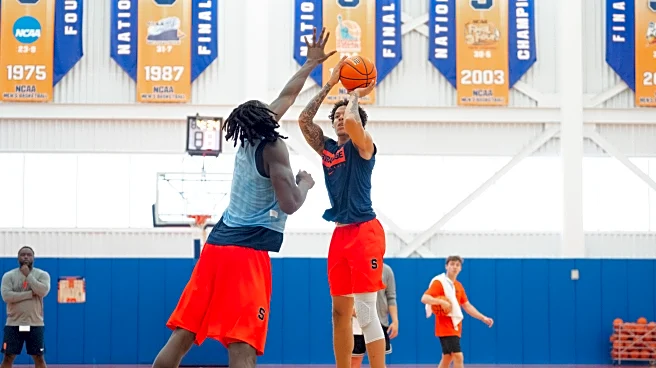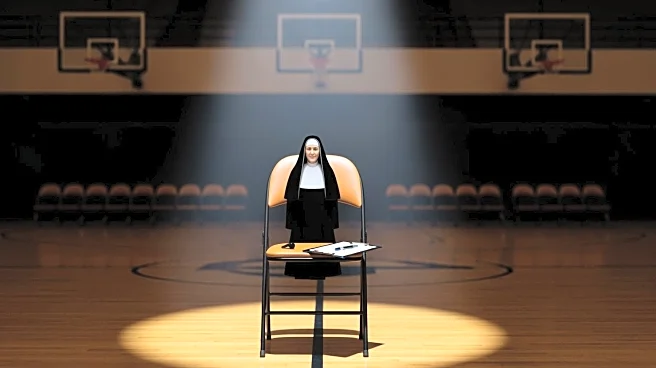What's Happening?
The Syracuse Orange men's basketball team is aiming to end a four-year NCAA Tournament drought under the leadership of head coach Adrian Autry. This marks a significant period for the team, as it has not missed the tournament for such an extended time
since before Jim Boeheim became head coach in the early 1970s. Autry, who took over after Boeheim's retirement, expressed his determination to make the tournament every year, emphasizing his commitment to the program and its importance to the community. The team is focusing on rebuilding and strategizing to compete effectively in the upcoming season, with hopes of returning to their former glory.
Why It's Important?
The Syracuse Orange's absence from the NCAA Tournament for four consecutive years is notable given their historical success, including a national championship and numerous tournament appearances. This drought highlights the challenges faced by the team in adapting to the modern era of college basketball, especially after losing a Hall of Fame coach. The team's efforts to end this drought are crucial for maintaining its reputation and legacy. Success in the tournament could boost morale, attract talent, and reinforce the program's significance to the local community and alumni.
What's Next?
As the season progresses, the Syracuse Orange will need to focus on integrating new talent and refining their strategies to compete at a high level. The team's performance will be closely watched by fans and analysts, particularly the contributions of new players like Kiyan Anthony, son of Carmelo Anthony. The team's ability to adapt and overcome challenges will be critical in determining their success and potential return to the NCAA Tournament.
Beyond the Headlines
The Syracuse Orange's situation reflects broader trends in college basketball, where programs must continuously evolve to remain competitive. The transition from a long-standing coach to new leadership presents both challenges and opportunities for innovation. The team's efforts to rebuild and compete could serve as a case study for other programs facing similar transitions.



